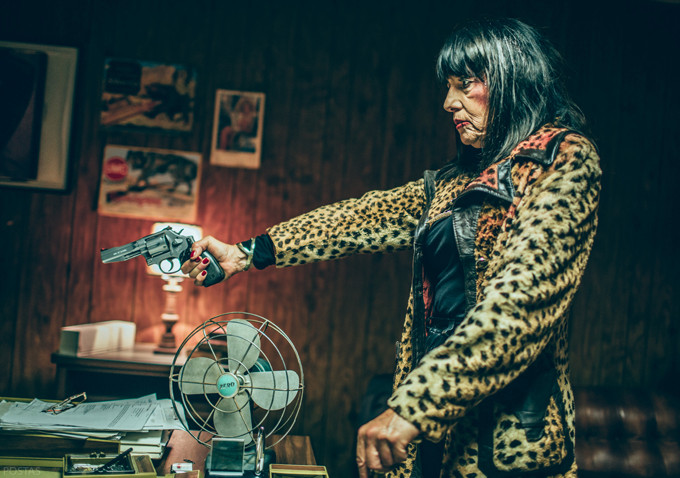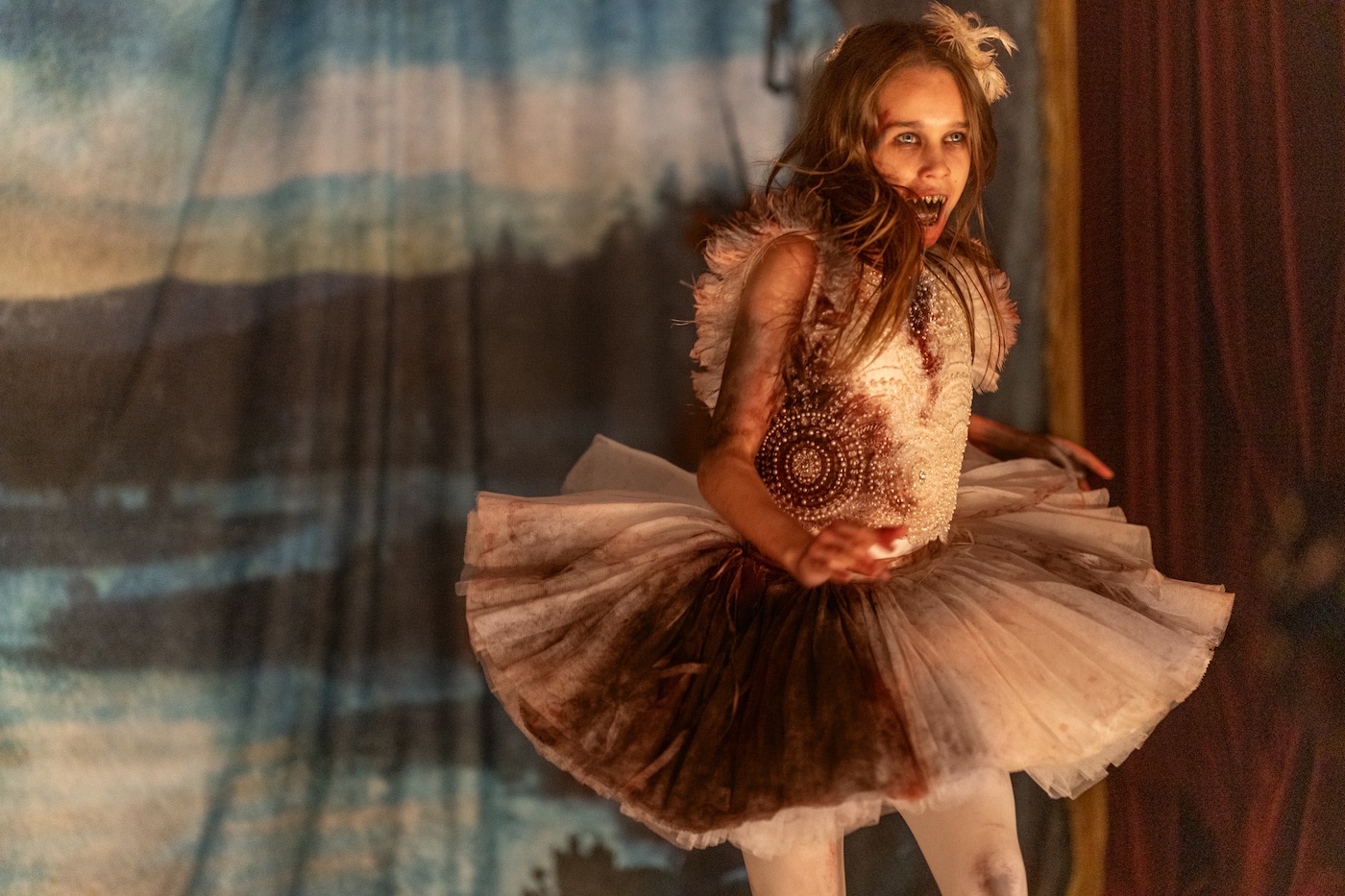
[BUFF ‘18] ‘The Queen of Hollywood Boulevard’ Deserves Its Royal Status
-


“Pretty Little Liars: Summer School” Official Trailer Assembles the Final Girls and Starts Slashing
-


‘Trap’ – Official Trailer Previews a Wild New Horror Experience from M. Night Shyamalan
-


‘Transformers One’ Trailer – Chris Hemsworth Voices Optimus Prime in Brand New Animated Movie
-


‘Nightwatch: Demons Are Forever’ Trailer Teases the Return of Familiar Faces and an Unsettling New Killer
Orson Oblowitz delivers a love letter to grindhouse cinema with a dark, gender-bending journey through Hollywood that’s not your typical revenge film.
“I’ve seen it in the movies…”
Genre films pride themselves in their ability to be different and think outside of the box. In spite of this, it’s still very easy for horror films to adopt a similar universal look that can lead to a tunnel vision of sorts. Revenge pictures are nothing new at this point and neither is the idea of female-driven revenge films. However, a revenge picture where the rampager is a 60-year-old woman? Well, that’s pretty damn different and something that definitely grabs your attention.
Orson Oblowitz’ film has such a clear love for grindhouse cinema and experimental film and it embraces those sensibilities as much as possible. The Queen of Hollywood Blvd. throws a lot at its audience and doesn’t care if they can’t keep up. Everything here doesn’t necessarily work, but the film knows what it is and doesn’t try to compromise that vision. Early on the film tells its story through snapshots and a very touristy approach to the sights and splendor of Hollywood. Stylistic choices like this go along with the subject matter so well and help strengthen the film’s message.
The Queen of Hollywood Blvd. is definitely a trippy film that a lot of the time is more interested in tone and atmosphere than it is story. The film uses neons and lights in beautiful, inspired ways that would even make Michael Mann jealous. At times the movie also slows down time in scandalous ways to further illustrate the lucid, dreamlike quality that the darker side of Hollywood gives off. At one point the film presents the image of someone shot on the Hollywood Walk of Fame. The person’s blood spills out over the stars of film legends that were all more famous than the person whose life gradually glugs out. It’s a very on-the-nose visual, but also the sort of thing that you hope to see in a trashy grindhouse feature. As Mary gives into her more wicked impulses, the film presents some very neo-gothic imagery that meshes well with the neon aesthetic that’s already present.
The film’s look is a very big reason to see The Queen of Hollywood Blvd., but the other major selling point is Rosemary Hochschild’s performance as Mary. Mary is the very best sort of badass and the kind of character that immediately grabs your attention. The film excels in its ability to find a role and story that are so typically suited to a man and then completely pushes it out of its comfort zone. Director Orson Oblowitz pulls off a curious trick here by casting his own mother in this lead role, but he turns her into an instant star here. Mary has such a distinct way of talking that she really does feel like royalty or some kind of queen. She literally sits in a throne in one pivotal scene and Rosemary Hochschild’s pitch-perfect performance allows such a visual to not feel totally ridiculous. The character beautifully fulfills grindhouse staples with her veiled appearance and Mary smokes as many cigarettes as she does deliver lines
The Queen of Hollywood Blvd. visits Mary on her 60th birthday and while she’s ready to more or less throw in the towel and have a simple celebration, life has very different plans for her. Mary’s troubles begin with the arrival of a goon from the mob, Duke (Roger Guenveur Smith), who’s tired of waiting for the money that she owes him for her club. Smith’s performance makes Duke feel a lot like the detached Bobby Peru from Wild at Heart and is just absolute creepsville. The film also features the great Michael Parks in his final onscreen role as Chet, one of the misanthropes that Mary is forced to deal with during her descent. When the threats start to come in from him, they’re very believable. On top of Mary’s issues with her club, this mob business spills into her strained relationship with her son.
A weird twist of fate and female empowerment sees Mary take in Grace (Ana Mulvoy-Ten), a minor who tries to get sold to her as a dancer. She feels a weird kinship and wants to turn this girl’s life around. Mary realizes that it may be too late for her, but not for Grace. The dynamic between Mary and Grace is one of the more fascinating aspects of the film and the final act of the picture brings the two of them together in a crucial way. This relationship is far from perfect, but it’s touching to see Mary cling to someone while her son’s fate is in jeopardy. The film explores how as Mary grows older she feels more distant from her son and the city that she’s given her life over to. She’s eager for any sort of meaningful connection at this point.
The Queen of Hollywood Blvd. wallows how in Mary’s at the end of her rope. The movie even opens with a cute, little flourish where it starts at the end and then rewinds itself at an impossible speed back to the beginning. Mary is at the end of her film reel and she doesn’t have the luxury of just turning the clock back to the beginning. The film wants you to know that she’s doomed and on her last legs when this story begins.
There’s also a great soundtrack here that heightens the material and fluctuates between eerie and waves of nostalgia back to the ‘70s. In addition to some of the operatic touches with the film’s music, it also makes use of “Lucifer Rising Suite,” which is composed by Bobby Beausoleil, who’s currently serving a life sentence in prison for his hand in the Manson murders. There are unusual, off-kilter touches like that all over the film (like how there are an abundance of adult film stars that occupy the picture) that add to the dreamlike faux-glamor aesthetic of Hollywood.
The Queen of Hollywood Blvd. boils down to being a film about desperation and inner strength. Even though the film does push this strong, inspirational message throughout it, there’s a bit of a depressing bummer of a conclusion to it all. In the end, The Queen of Hollywood Blvd. is well acted, looks beautiful, and tells a powerful, concise story that oozes with style. It’s a very promising effort from Orson Oblowitz and it leaves me very curious to see what he turns out next.
It’s also worth mentioning that Oblowitz’ other feature, Home Is Where the Hell Is, covers totally different horror territory (home invasion) and is also coming out later this year. I’d love to see this guy tackle a creature feature and really let loose in the future. Oblowitz clearly has more unconventional, surreal urges that he wants to play with and while The Queen of Hollywood Blvd. has fun with those in some ways, there’s another project out there that’s waiting for Oblowitz to truly go nuts. In an age in film where female-led action films like Atomic Blonde, Fury Road, Red Sparrow, or you know, Wonder Woman are heavy-hitters, Oblowitz succeeds in making The Queen of Hollywood Blvd. not feel redundant and also become their worthy contemporary.
The film screens at this weekend’s Boston Underground Film Festival.


Movies
‘Abigail’ on Track for a Better Opening Weekend Than Universal’s Previous Two Vampire Attempts

In the wake of Leigh Whannell’s Invisible Man back in 2020, Universal has been struggling to achieve further box office success with their Universal Monsters brand. Even in the early days of the pandemic, Invisible Man scared up $144 million at the worldwide box office, while last year’s Universal Monsters: Dracula movies The Last Voyage of the Demeter and Renfield didn’t even approach that number when you COMBINE their individual box office hauls.
The horror-comedy Renfield came along first in April 2023, ending its run with just $26 million. The period piece Last Voyage of the Demeter ended its own run with a mere $21 million.
But Universal is trying again with their ballerina vampire movie Abigail this weekend, the latest bloodbath directed by the filmmakers known as Radio Silence (Ready or Not, Scream).
Unlike Demeter and Renfield, the early reviews for Abigail are incredibly strong, with our own Meagan Navarro calling the film “savagely inventive in terms of its vampiric gore,” ultimately “offering a thrill ride with sharp, pointy teeth.” Read her full review here.
That early buzz – coupled with some excellent trailers – should drive Abigail to moderate box office success, the film already scaring up $1 million in Thursday previews last night. Variety notes that Abigail is currently on track to enjoy a $12 million – $15 million opening weekend, which would smash Renfield ($8 million) and Demeter’s ($6 million) opening weekends.
Working to Abigail‘s advantage is the film’s reported $28 million production budget, making it a more affordable box office bet for Universal than the two aforementioned movies.
Stay tuned for more box office reporting in the coming days.
In Abigail, “After a group of would-be criminals kidnap the 12-year-old ballerina daughter of a powerful underworld figure, all they have to do to collect a $50 million ransom is watch the girl overnight. In an isolated mansion, the captors start to dwindle, one by one, and they discover, to their mounting horror, that they’re locked inside with no normal little girl.”








You must be logged in to post a comment.